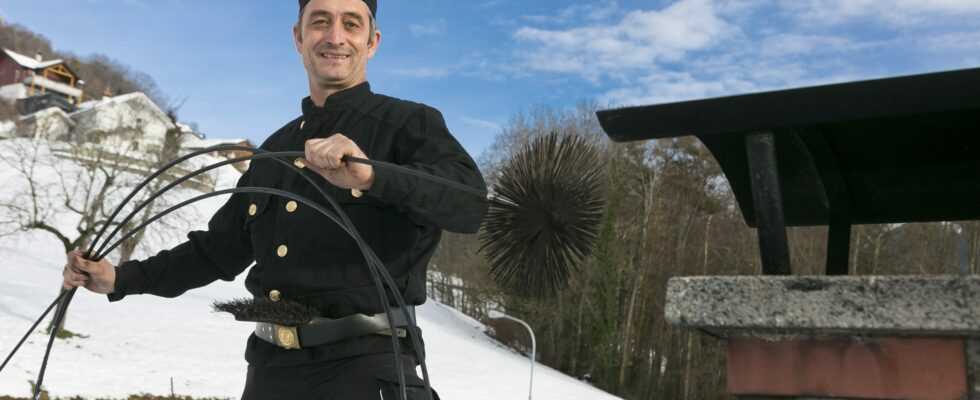In his series “The Last”, author Robert Schneider portrays people who pursue an ancient craft. At the turn of the year he spoke to Stefan Marte about the job of a chimney sweep and why it is said to have a special connection to happiness.
With a push brush and sturdy work clothes, the black man stands on the snow-covered roof and grins at me. Using a chicken ladder and then on all fours, I climb up to Stefan Marte to watch him clean the chimney. “I borrowed the jacket with the beautiful brass buttons especially for the interview,” he says. “Before that, there was still the double-headed eagle up there.” Because the last difficult year turned our backs on us and the new one, on which there is now so much hope, is only a few hours young, I have decided to consider the good luck charm to interview personally. “Why do you associate the” Kämifeager “with luck?” I ask Stefan Marte. “It has to do with the fact that the chimney sweepers protect people from fires through their work,” he says. “When a house burned in the Middle Ages, the whole street or even the city quickly caught fire.” “I can’t explain it, but I just always wanted to be a chimney sweep,” says the father of three grown children. He started his apprenticeship in 1985 and then worked for the then guild master Hugo Gstöhl in Götzis for 17 years. “In 2003 I was lucky that a swept area became free. Sweeping areas were originally divided up by Empress Maria Theresa and have more or less survived to this day. At that time, the job passed from father to son, so that a swept area has often remained in the family for many generations. ”He stands on the roof with his legs apart, takes the broom and starts cleaning the chimney. “Depending on the nature of the chimney, I use different inserts for the broom.” Soot and fly ash can clog a chimney or reduce smoke extraction. If a lot of soot is deposited, especially so-called shiny soot, and the inner walls of the chimney are heated up by prolonged heating, the hot exhaust gas can ignite the soot, which can lead to a chimney fire. I ask Stefan Marte. “When I started, the job was still very limited to the cleaning sector. In the meantime, however, we are also active as independent air pollution control bodies. We regularly measure the emission values for the state’s environmental agency and record them in a special database. ”Then the guild also became very active in preventive fire protection, which was what the fire inspection used to do. “I am even professionally obliged to report grossly apparent deficiencies to the relevant authority. We also regularly carry out safety checks on the individual devices, be it wood, gas or oil burners. In this way we can recognize excessively high carbon monoxide values in good time and act as a preventive measure, so to speak. ”My romantic idea of the job of a chimney sweep is a little shaky. In conversation with Stefan Marte, I see that this is a very complex job description with a high level of awareness of climate protection. So the chimney masters in our country are becoming a kind of good luck charm again, only under different auspices. Meeting people What is the most beautiful thing about the job for him personally, I ask as we climb off the roof again. “The encounter with people,” says Stefan Marte. “I appreciate that much more now than in the past. Over the years you become something of a confidante and don’t just talk about the weather. That’s very nice, for me too. For example, I come into a house. Maybe there’s trouble right now. If I go again, people will be in a good mood again. ”“ That is more likely to be attributed to your open and cordial nature, ”I reply. “I just love talking to people, and that’s why I love this job. “The golden brass buttons on Stefan’s jacket flash in the sunlight, as does his laughter. My series“ The Last ”about old trades ends with the portrait of the chimney sweep Stefan Marte. For almost a whole year I was able to get to know people in Vorarlberg who are engaged in an activity that is either dying out or subject to great change. It was the year of lockdowns, great uncertainties and irritations. As different as the people I visited were, they always had one thing in common: whether old or young, they were satisfied women and men, safe in the craft that they persistently carry on, regardless of where the wind is blowing from. Nowhere have I experienced so much self-assurance and dedication as in the dying professions. In the 37 portraits in this series, I came home richly gifted with knowledge. But even richer when I meet these craftspeople, to whom I bow.
source site-12
